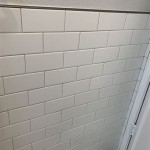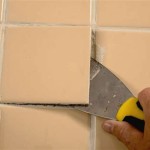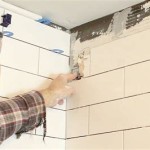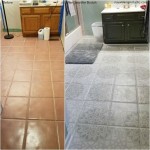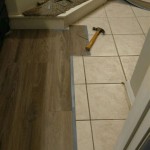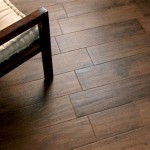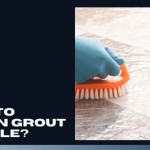What Side of Cement Board Do You Put Tile On?
Cement board, also known as cement backer board, is a common substrate used in tile installations, particularly in areas prone to moisture, such as bathrooms and kitchens. Its primary function is to provide a stable and durable surface to which tiles can be adhered. However, a frequently asked question among DIYers and even some professionals revolves around which side of the cement board should face outward to receive the tile. Understanding the correct orientation is crucial for ensuring a long-lasting and successful tile installation.
The simple answer is: tile should be installed on the smoother side of the cement board. However, the reasoning behind this recommendation and the nuances involved require a more detailed explanation. This article will explore the different faces of cement board, the characteristics that make one side preferable for tiling, and factors to consider when choosing and installing cement board.
Identifying the Correct Side
Cement board typically has two distinct surfaces. One side is smoother, often with a slightly textured finish that's still relatively even. This is the intended surface for tile application. The other side is usually rougher, potentially exhibiting a more pronounced texture or even visible manufacturing marks. While the difference can sometimes be subtle, careful inspection will reveal the disparity. Manufacturers often include markings or printing on the smoother side, implicitly indicating the intended face for tiling. Always refer to the manufacturer's specifications for the specific cement board product being used; these specifications clarify installation guidelines and intended surface orientation.
The smoother surface is engineered to provide better adhesion for thin-set mortar, the adhesive used to bond tiles to the substrate. A consistent and even surface allows for maximum contact between the mortar and the cement board, resulting in a stronger bond. This is particularly important in wet environments where water infiltration could compromise the adhesive if the bond is weak. By using the designated smoother side, the risk of tile failure, such as cracking or detachment, is significantly reduced.
While it might seem counterintuitive, the rougher side is not designed to enhance mortar adhesion. The uneven surface can create air pockets and inconsistent mortar distribution, leading to a weaker bond. The texture of the rougher side can also interfere with the proper setting of the tile, potentially resulting in an uneven tile surface. Therefore, consistently using the smoother side as the tile-receiving surface is essential for a professional and durable installation.
Why the Smoother Side is Preferred
The preference for the smoother side is rooted in the principles of adhesion and surface compatibility. Thin-set mortar relies on a chemical and mechanical bond to effectively adhere tiles to the substrate. The smoother surface of the cement board offers a more uniform and predictable interaction with the mortar. Here are some key factors:
Surface Area:
While a rougher surface might initially seem to offer more surface area for adhesion, the unevenness can actually reduce the effective contact area. The peaks of the rough surface may make contact, while the valleys remain unfilled, resulting in a less robust bond. The smoother surface, though appearing less textured, provides a more consistent plane for the mortar to spread and adhere to.Mortar Distribution:
Thin-set mortar needs to be evenly distributed to ensure consistent adhesion across the entire tile surface. The smoother surface facilitates this even distribution, allowing the notched trowel to create uniform ridges of mortar. These ridges then collapse slightly when the tile is pressed into place, creating a continuous bond. A rougher surface can disrupt the trowel's action, leading to uneven mortar application and potential weak spots.Capillary Action:
Mortar relies on capillary action to draw itself into the pores of both the tile and the cement board. A smoother, more consistently porous surface allows for more efficient capillary action, enhancing the bond strength. A rough and uneven surface can impede this process, resulting in inconsistent mortar absorption and a weaker connection.Reduced Air Entrapment:
Air pockets trapped between the mortar and the substrate can significantly weaken the bond. The smoother surface minimizes the likelihood of air entrapment, promoting a solid and continuous connection. A rougher surface can create voids where air can become trapped, compromising the integrity of the installation.Factors to Consider During Cement Board Installation
Beyond choosing the correct side for tile application, several other factors contribute to a successful cement board installation. Ignoring these factors can negatively impact the longevity and performance of the tiled surface:
Subfloor Preparation:
The subfloor beneath the cement board must be structurally sound, level, and clean. Deflections or inconsistencies in the subfloor will transfer to the cement board and ultimately to the tile, potentially causing cracks or unevenness. Ensure the subfloor is free of debris, loose nails, and any coatings that could interfere with adhesion. Repair any damaged areas and level the surface as needed.Fastening Methods:
Cement board should be securely fastened to the subfloor using appropriate screws specifically designed for cement board. These screws are corrosion-resistant and feature a countersinking head that allows them to sit flush with the surface. The correct screw spacing is crucial for preventing movement and flexing. Refer to the manufacturer's recommendations for the appropriate screw type, length, and spacing.Seam Treatment:
The seams between cement board panels should be treated with a fiberglass mesh tape embedded in thin-set mortar. This creates a continuous and reinforced surface, preventing cracks from forming at the seams. The tape should be centered over the seam and pressed firmly into the mortar to ensure proper adhesion. This step is critical for preventing moisture from penetrating the substrate and causing damage.Adequate Ventilation:
Ensure the area where the cement board is being installed is adequately ventilated. This allows the thin-set mortar to cure properly and prevents moisture from becoming trapped behind the cement board. Proper ventilation is particularly important in bathrooms and other areas prone to high humidity.Proper Thin-Set Mortar Selection:
The choice of thin-set mortar is crucial for a successful tile installation. Select a mortar specifically designed for use with cement board and the type of tile being installed. Modified thin-set mortars, which contain polymers that enhance adhesion and flexibility, are generally recommended for use with cement board. Follow the manufacturer's instructions for mixing and application.Staggered Joints:
When installing multiple sheets of cement board, stagger the joints to avoid creating continuous lines of weakness. This distributes stress more evenly across the surface and reduces the risk of cracking. Staggering the joints is a common practice in construction and is essential for maintaining the structural integrity of the installation.Acclimation:
Allow the cement board to acclimate to the environment in which it will be installed for several days before tiling. This helps to minimize expansion and contraction after installation, reducing the risk of cracking or tile movement. Acclimation is particularly important in areas with significant temperature or humidity fluctuations.In summary, consistently using the smoother side of cement board for tile application, coupled with proper subfloor preparation, secure fastening, appropriate seam treatment, adequate ventilation, and careful material selection, will ensure a durable and long-lasting tile installation. Adhering to these best practices will significantly reduce the risk of tile failure and maintain the aesthetic appeal of the tiled surface for years to come.

Easily Install Cement Board To Prep For Tile Installation

How To Install Cement Board For Tile Projects Diy Family Handyman

How To Install Durock Cement Board Making Maanita

Installing Cement Backerboard For Tile Flooring Hometips

Easily Install Cement Board To Prep For Tile Installation

How To Install Cement Board On A Floor Diy Family Handyman

How To Install Cement Board For Tile Projects Diy Family Handyman

How To Install Hardie Backer Cement Board On Floors James Pros

How To Install Cement Board For Tile Projects Diy Family Handyman

How To Install Cement Board The Home Depot
Related Posts

